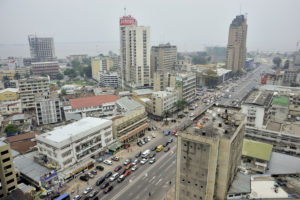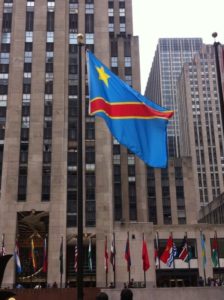The African Cultural and Development Association (ACDA) honours an African country annually in celebration of Emancipation Day. This is done because most Guyanese of African descent cannot trace their ancestral roots to a particular African nation.
In choosing a particular African country to highlight every year, ACDA seeks to educate young and old about African countries and to remind them that Africa has 54 countries and is not a single country like China or India or the United States.

Stadtbild Kinshasa.
Traditionally, ACDA honours an African country every Emancipation Festival by building an educational booth for that country. This year, the Democratic Republic of Congo (DR Congo) was chosen as it is the second largest country in Africa with a very rich history and culture, something ACDA will proudly showcase during the observance of this year’s Emancipation Day.
DR Congo is a vast country with immense economic resources. It is for this fundamental reason that the African Cultural and Development Association has selected DR Congo as the country of focus. This country, which is located in Central Africa, shares many parallels with Guyana; it has a vast natural resource wealth which enables most of the world’s technology to exist. In addition, the Congolese people that reside in Guyana are direct descendants of settlers who came to Guyana as indentured labourers after slavery. DR Congo and Guyana share a common past. Due to their similarities, their futures may as well be aligned.
With one of the largest populations in Africa, spread across a huge area, the people of DR Congo are made up of many hundreds of different groups, speaking a variety of Bantu languages. It is the second largest country on the continent.
With over 215 different mother tongues, the DR Congo is one of the most linguistically diverse countries in the world. More than 250 ethnic groups have been identified and named, of which the majority are Bantu. The four largest groups – Mongo, Luba, Kongo (all Bantu) – and the Mangbetu-Azande make up about 45 per cent of the population.




